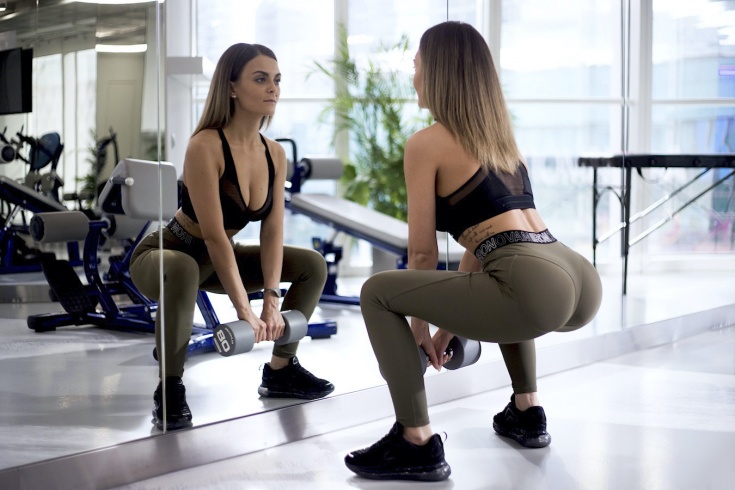Everything you need to know about different types of reps – from negatives to partial reps and time under load. Find out how to increase the intensity and effectiveness of your workouts!
Plunging headlong into the abyss of high-intensity training, you can easily lose sight of the basics. I come across this almost every day – guys with a smart look talk about difficult and advanced training techniques, and they themselves do not have the slightest idea about the fundamental principles of bodybuilding.
Take recovery, for example. Gym regulars make plans for six or even seven workouts a week, for two hours or more. At the same time, they completely forget about the basic principle – the importance of recovery. Bigger is not better, muscles won’t grow if you swing all day long. Muscle growth occurs during the recovery period.
When it comes to my personal training process, I dive into the midst of high-intensity training, but in my articles I try to talk about simple things because every single day I see how the simplest mistakes lead to the fact that guys burn out emotionally and quit training. So today we will consider a seemingly simple question that is neglected by many beginners, and sometimes even experienced athletes. The quality of the repetitions is the alpha and omega of the training process because your workout consists of a chain of repetitions, broken down into short sections by rest periods. Therefore, you should strive to get the most out of each rep.

Effective reps are more than just up and down barbells. The most important role is played by the technique of performing the movement, you must understand the essence of the exercise, approach it thoroughly and clearly. You must perform each exercise in such a way that the muscle or muscles are involved in the work at 100%. If you do not feel the exercise with the target muscle, then most likely you either do not have a good feedback neuromuscular connection yet, or your technique is not in order, or the reps are of poor quality.
Poor repetitions reduce the load on the target muscle. In relation to our topic, one of the most common mistakes is performing hasty repetitions at an overestimated pace, when inertial acceleration deprives all the possible benefits of the exercise. You need to choose a pace that will work your muscles as much as possible. Here we come to the question of the pace and quality of reps and how can we influence these factors?
There are actually several ways to do repetition:
Instant (explosive) ascent and slow descent. The explosive technique of the concentric (lifting) repetition phase is good for developing strength, while the slow and controlled eccentric phase (descent) makes the most of the potential of the negative part of the rep. In fact, we have before us one of the most common ways of doing exercises. Not surprisingly, it is popular with Olympic weightlifters and athletes looking to develop explosive strength.
Does such work in training contribute to the achievement of the set goals? On this issue, the opinions of experts were divided. There is indeed a certain logic in the fact that the explosive phase involves more muscle fibers. But Arthur Jones’ assumption that the negative phase of repetition is the most critical is not without common sense.
Slow and controlled ascent, pause and maximum spin, followed by slow, controlled descent with maximum range of motion is another popular type of repetition. Note: neat and controlled repetitions, without jerks and inertial accelerations. At the top point, you pause and tense your muscles as much as possible, and then slowly lower the projectile. This approach is not always justified, but in the case of exercises in which the maximum load falls on the muscles at the top point (for example, leg extension), it works just fine.
Maintaining the weight at the point of maximum effort is real static work, but it must be said that this static component does not have to be limited by the peak effort. At any point on the trajectory, you can hold the projectile, hold it for as long as you have enough strength, and then return to normal repetition. And the principle of maximum amplitude will allow you to work out the muscles throughout the entire active part of the movement. But, to be fair, it’s only good if every aspect of repetition puts stress on the target muscle. For example, when lifting the bar for biceps, at the top point, the voltage is zero, and in this case it makes sense to turn to partial repetitions. This is a fairly common approach in bodybuilding, and many athletes perform almost all of their reps in this manner.
Controlled ascent and descent without pause, like a piston – this approach provides continuous muscle tension, without the slightest hint of rest, until the end of the set. This is a variation of the above method, only you need to make sure that all the work is done by the muscles, and not by inertial acceleration.
Super slow repetitions – today this principle is no longer as popular as it was before, but its essence has not changed, you need to perform repetitions as slowly as possible – 10 seconds for the ascent and another 10 seconds for the descent.
Partial reps – in this case, I mean reps performed in the middle of the trajectory, without reaching the top point and without completely relaxing in the starting position. Many pros train in this way, justifying it by the fact that partial reps do not load the joints as much. This also includes X-reps – a popular variation of very short partial reps performed in a semi-stretch phase, usually at the end of a set.
Of course, the proposed list cannot be called complete, but we have considered the main options for performing repetitions.
Now it’s time to talk about time and pace, for example, what does “slow and manageable” mean in seconds? The concept of “pace” will answer this question.

Pace is the speed at which an exercise is being performed, usually displayed in 3 or 4 digits. Here’s a good example:
- 3 – eccentric contraction, weight loss, negative phase
- 0 – complete relaxation
- 2 – concentric contraction, weight lifting, positive phase
- 0 – full reduction
In this example, you have 2 seconds to deliver the projectile to the top point, and 3 seconds to descend, without pauses. This is a classic bodybuilding pace and is considered moderately slow repetition.
And, of course, there are many options for how to turn basic repetition into an instrument of torture for intensive training, for example:
Negatives – Research has shown that concentration in the downward phase is hugely beneficial, when you slowly lower the projectile, and not just throw it on the ground. Negatives imply the creation of resistance to the downward movement of the projectile. Arthur Jones generally suggested doing some negatives with a weight that is about 20% heavier than what you would normally use. You can also do negative reps at the end of the set. This is a common high-intensity training technique and is usually used in combination with other techniques to drive a set to failure and go beyond reason.
1 and ½ repetitions – Do one full-repetition followed by a half repetition. This is considered one repetition. Arnold’s favorite trick.
21 – 7 half reps from full relaxation to midpoint, 7 half reps from mid to top, and 7 more full range reps. Also, by the way, Arnold’s favorite trick, which he used mainly to train his arms.
Static holding – I already mentioned this technique, choose a point (or even more than one) anywhere in the trajectory and hold the projectile in it for a certain time.
Burning reps – At the end of the set, when you have no energy left for a full rep, you can do a few short reps to extend the set. By short, I mean 3-5 cm.
Now that we’ve explored a ton of repetitions, it’s time to take a look at the other aspects that affect your performance in the gym.
Time under load. Another “best way to train,” but that’s in theory. but in practice it is just a good trick for adding variety to the training program.
Understand that there is no “best trick”, everything works for a period of time, and then something needs to be changed. Indeed, there are more effective techniques and less effective techniques, but which of them is the most productive – it largely depends on individual characteristics. As for the time under load, we are talking about the concept that the approach should last at least 30 seconds and at most 70 seconds. Long-term sets are believed to stimulate muscle growth and have less impact on strength or peak power.
So, we’ve looked at a few examples of how you can improve your repetition efficiency. And as already mentioned, it’s not so much about abstruse techniques and techniques as about the quality of repetitions, because only quality really matters. Even if you, like a sponge, have absorbed all the ideas proposed in the article, you should still perform clean reps that allow the muscles to do all the work. I repeat, no inertial acceleration, no throwing of the projectile to the ground.

I think sometimes we focus so much on some sophisticated bodybuilding techniques that we begin to take the training itself, the execution of each repetition, for granted. And we stop even thinking about it. It happened to me too. At these moments I would stop, take a step back and revise the meaning of each repetition.
Concentration and focus are two key requirements for doing repetitions correctly. In training, I make sure to control every nuance of the repetition, from the movement itself to my form and working muscle groups. If I feel that something is going wrong, I make adjustments.
Remember, you must choose the type of repetition that you like and of course it makes sense to combine different types of repetitions, as well as other aspects of the training process. But the most important tip is that nothing will contribute to the growth of results like full concentration on each repetition. If your repetitions aren’t good enough, the rest doesn’t matter anymore – you missed one seemingly insignificant detail, but it has the biggest impact on your results.




